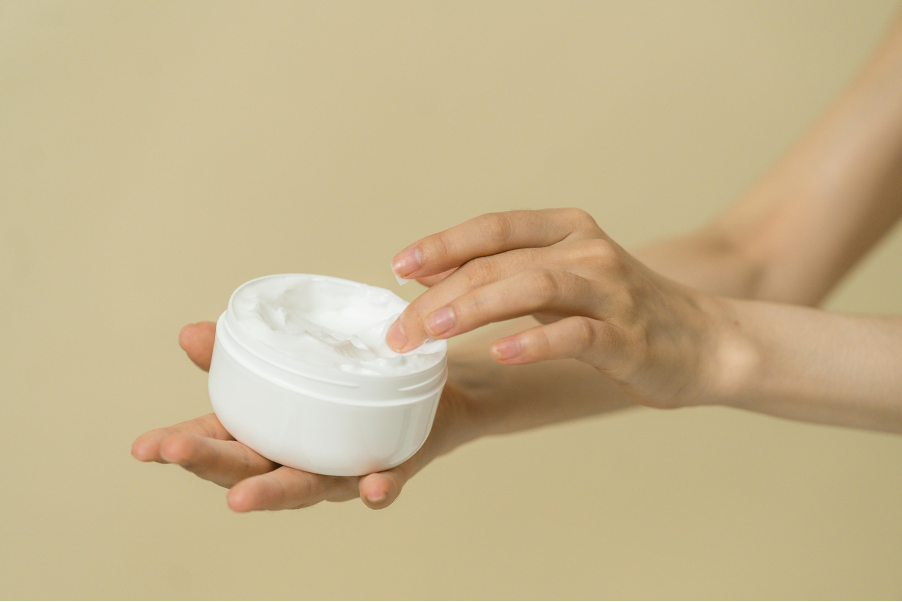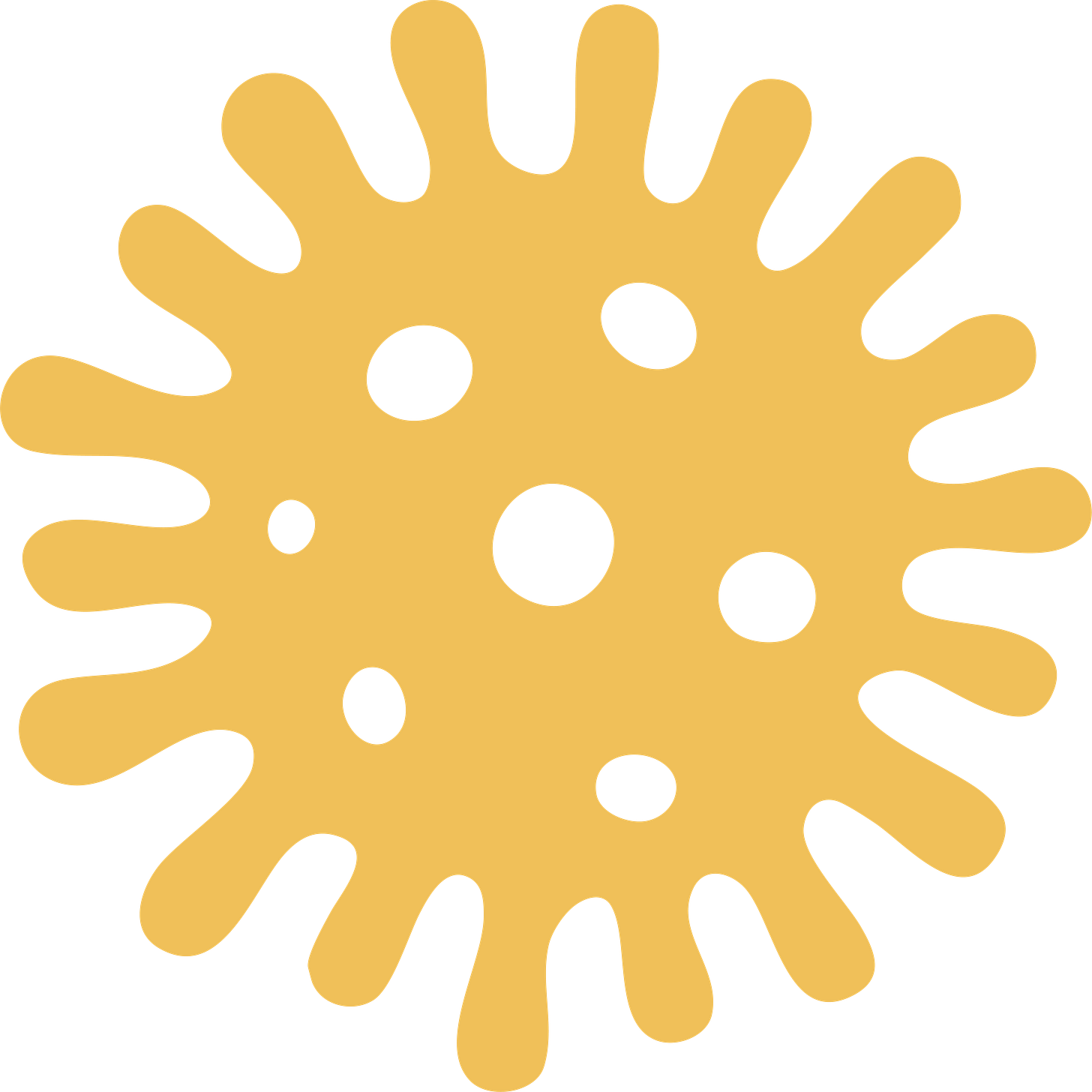When Self-Care Isn’t Preconception Care
Modern rituals, endocrine disruptors and the biology of consequence
What You’ll Get in This Issue:
What endocrine-disrupting chemicals (EDCs) are and how labelling conceals their true identity
How they mimic your natural hormones to disrupt egg and sperm development
A fertility-focused field trip to buy moisturiser
Which products bombed the endocrine test and which came out on top (spoiler: price and packaging were no predictors)
How to navigate labels without memorising a chemistry degree
A cheat-sheet for your bathroom mirror
And a look ahead at how these chemicals may affect not just conception, but you legacy
In the Olden Days (cue my 20-something daughters: Here we go!) there was no such thing as self-care. Your skin was dry, oily or normal. Cleanse, tone, moisturise. Hair care followed suit: shampoo and conditioner, pick your type, lather, rinse, repeat.
Clinique, with its pale green packaging and “3 Step System,” was the epitome of simplicity. Further, the label dermatologically tested gave the impression of serious scientific endeavour behind it. The older ladies might reach for an Estee Lauder serum, but younger skin didn’t seem to demand the 10-step complexity it now apparently requires.
Fortunately, here in Australia we have Chemist Warehouse, our one-stop shop (or should I say institution?) for all the products we feel compelled to apply before walking out the door. A mega-store chain that we had apparently been waiting for all our lives. Think Walgreens in the US. In Europe… well, the mega-pharmacy model hasn’t quite caught on (perhaps for the best?).
Recently I was there deliberating which travel-size cleanser to purchase, alongside a young woman doing the same. Of course (as a mother, preconception clinician and scientist with the fate of human evolution weighing on my mind) I couldn’t help myself.
I scanned her selection with my Yuka app (no affiliation), which rates personal care products for safety, and proceeded to give her a Lesson in Chemistry: EDCs (Endocrine Disrupting Chemicals) And Their Effects On Reproductive Health. Out of the handful she was considering, only one came up clean.
I half-apologised for giving mum-like unsolicited advice. But she was travelling and actually missed her mum’s advice. “Now I’ve got a Mumma in my pocket,” she said, holding up the newly downloaded app.
And while most men haven’t entered the realm of 10-step routines, they’re in on it too with Bro-formulas, beard oils, charcoal masks, anti-wrinkle creams. Back in the day, the entire male grooming routine might’ve consisted of a bar of soap and a splash of 7-Eleven eau de cologne.
Lesson in Chemistry: EDCs and Reproductive Health:
So here’s your Lesson in Chemistry, as delivered to one unsuspecting young woman in the travel-size section at Chemist Warehouse.
Endocrine disruptors mean what they say on the tin, even if they don’t say so on the packaging: they interfere with your hormones. Some of the worst offenders are parabens and phthalates, often hiding behind unpronounceable names or vague terms like “fragrance” and “parfum.”
More Than Skin Deep
While the products might be tested on the skin for everything from reactivity to being able to turn back the clock, the scientists aren’t tracking them once they’re absorbed by the skin.
The skin forms a great protective shield, but it’s also porous and not able to hold EDC’s off at the pass. In they go, into our bloodstream where they masquerade as real hormones, upsetting the hormonal harmony essential for reproductive (and general) health.
Hormonal Disharmony
Think of your hormones as musicians in an orchestra. All hormones, including sex hormones like estrogen, testosterone, FSH (follicle stimulating hormone) and LH (luteinising hormone) each have their part to play. And harmonising them all is The Conductor: your hypothalamus. It listens to your environment and adjusts the tempo accordingly.
Now picture a group of punk rockers - EDCs - dressed in orchestra blacks, slipping into the pit unnoticed. Mimicking a classically trained musician but not following the score, they throw off the rhythm, distort the melody and break the harmony. What should be a hormonal symphony becomes a cacophony.
To the audience, it might just sound a little off. But backstage, their ovaries and testes are taking the full hit.
For sperm, EDCs mean compromised spermatogenesis - the months-long training program that turns stem cells into swimmers.
EDCs can sabotage testosterone production, damage DNA and mitochondria (you need clean energy to make babies) and leave sperm misshapen, sluggish and reduced in number.
And guys, that 24-hour sperm myth? You know the one: We men make sperm every 24 hours, so no need to stop drinking and smoking just yet.
Not quite. Every 24 hours is how often sperm get launched into the holding pen: the epididymis (that long, coiled tube behind your testicles) where swimmers wait until go-time. Spermatogenesis itself takes around 2 ½ months (I like to round up to 3 mths).
For eggs, EDCs mean interference with folliculogenesis - the process that prepares an egg for ovulation. Even though you’re born with all your eggs, each one undergoes months of hormonal development, maturing from a dormant state into a viable contender.
Think of a young ballet dancer preparing for her solo. EDCs can derail that process before she even makes it to the stage. Disruptions here can affect estrogen signalling, slow egg development and damage the egg’s DNA and mitochondria.
The result: eggs that are less resilient, energy depleted, less viable and less able to complete their final maturation.
Reproductive Health Is More Than Fertility
Even if parenthood isn’t on your horizon, consider that EDCs are also associated with menstrual irregularities, PCOS, endometriosis, uterine fibroids, testicular disorders, low testosterone, hormone-related cancers (breast, testicular, ovarian) and more.
The Endocrine Disrupting League Table: White Coat vs Hooves
If only one of a handful of travel-sized cleansers passed the test for the young traveller I met, what might that mean for the products that stay on your skin the longest - moisturisers?
So I returned to Chemist Warehouse for a fertility field trip, conducting a randomised scan of moisturisers from a range of brands whose packaging all seemed to say Pick Me, like something out of Alice in Wonderland.
I scanned across:
• Doctor-formulated ranges
• Promise-heavy contenders
• Clinical-clean aesthetics
• Nature-drenched branding
• Nostalgic classics
• And the humble Goat
Keeping score was the Yuka app, which links ingredients to scientific data, including studies on EDCs.
Turns out neither packaging, promise, nor price had any bearing on performance in the field. In fact, there were significant variations within brands.
At one end, Dr. Lewinn’s Private Formula produced a 5. Not out of 10. Out of 100.
At the other, Goat Moisturiser: 93 out of 100.
Apparently, the better formulator wears hooves, not a white coat.
And boy, were there some real surprises:
Rated ‘Bad’
• Cetaphil Daily Facial Moisturiser: 0/100
• Elucent Day Moisturiser: 2/100
• QV Oil-Free Moisturiser: 7/100
Rated ‘Poor’
• Dramatically Different Moisturizing Lotion+: 25/100
• Nivea Essentials Night Cream: 49/100
• Neutrogena Ultra Gentle Daily Moisturiser: 47/100
Rated ‘Good’
• Garnier Daily Mattifying Air Cream: 65/100
• Antipodes Baptise Hyaluronic Gel Ultra-Hydratant: 50/100
• Weleda Skin Food Light: 58/100
Rated ‘Excellent’
• Glow Lab Pro Collagen Plumping Night Cream: 93/100
• La Roche-Posay Toleriane Dermallergo Nuit: 100/100
• Avène Xeracalm Nutrition Baume Hydratant: 100/100
NB: Scores can vary dramatically within brands. Don’t write off one and praise another without doing your due diligence.
Scan Before You Smooth It On
To navigate the chemical maze, you could either memorise an extensive glossary of ingredients, or simply use an app. I use Yuka, however there are more out there, including Think Dirty and the EWG’s Healthy Living app.
And don’t stop at moisturisers. EDCs and other questionable ingredients also show up in makeup, sunscreen, deodorant, hair products, shaving creams, nail polish, fake tan, fragrance, vaginal washes, bath soaks and more.
Ancient Rituals, Modern Paradoxes
Beautifying rituals have long been part of being a woman. They’re fun and sensual. A moment to feel feminine, to pause, to be present with ourselves. Cleopatra bathed in donkey milk and anointed herself with scents and oils her body could recognise. (OK, the lead-based eye kohl was a problem...)
Today, we’re layering products containing chemicals that confuse our internal biochemistry, disrupting the very hormones that govern fertility, not to mention mood and libido. The paradox, of course, is that while we’re ‘looking after ourselves’ and perhaps hoping to enhance our attractiveness to a future partner, we may be undermining our reproductive and generational health.
Write This on Your Bathroom Mirror
Your skin is porous. What you smooth on doesn’t just sit there - it can enter your bloodstream, travelling far and wide.
EDCs like parabens and phthalates mimic hormones and throw off your reproductive signals.
EDCs are often hidden behind vague terms like “fragrance” or “parfum.”
Disrupting your hormonal rhythm can affect egg development, sperm quality and overall fertility.
Even "clean aesthetic" or "doctor-formulated" products can rate poorly.
Moisturiser is just the start. Check your makeup, sunscreen, deodorant, fragrance, shaving cream, hair products, bath soaks and vaginal care.
IN THE NEXT ISSUE
When we think about having a baby, conception is top of mind. But if only endocrine disruptors stopped there. These chemicals linger in the body, cross the placenta and may impact the health of our children… their children… and even their children.
Next issue, I’ll explore what the research says about these ripple effects, how EDCs end up in our ecosystems and share an aspect of health politics you may not have known about.
Warmly, Sonja
If this sparked something for you, tap 🧡 and hit Restack to pass it on.
Thanks for helping thoughtful fertility conversations travel further. 🤍
Curious to know more? Head to the About page for why I started Baby Ready Health and a bit about me.
Issues are free for now. If you're someone who likes to build things early, you can become a founding member. Or simply subscribe and follow along.
REFERENCES:
Bijlsma, N., & Cohen, M. (2018). Expert clinician’s perspectives on environmental medicine and toxicant assessment in clinical practice. Environmental Health and Preventive Medicine, 23. https://doi.org/10.1186/s12199-018-0709-0.
Hassan, S., Thacharodi, A., Priya, A., Meenatchi, R., Hegde, T., R, T., Nguyen, H., & Pugazhendhi, A. (2023). Endocrine disruptors: Unravelling the link between chemical exposure and Women's reproductive health.. Environmental research, 117385 . https://doi.org/10.1016/j.envres.2023.117385
Interdonato, L., Siracusa, R., Fusco, R., Cuzzocrea, S., & Di Paola, R. (2023). Endocrine Disruptor Compounds in Environment: Focus on Women’s Reproductive Health and Endometriosis. International Journal of Molecular Sciences, 24. https://doi.org/10.3390/ijms24065682.
Pan, J., Liu, P., Yu, X., Zhang, Z., & Liu, J. (2024). The adverse role of endocrine disrupting chemicals in the reproductive system. Frontiers in endocrinology, 14, 1324993. https://doi.org/10.3389/fendo.2023.1324993
Rattan, S., Zhou, C., Chiang, C., Mahalingam, S., Brehm, E., & Flaws, J. (2017). Exposure to endocrine disruptors during adulthood: consequences for female fertility.. The Journal of endocrinology, 233 3, R109-R129 . https://doi.org/10.1530/JOE-17-0023
Sharma, A., Mollier, J., Brocklesby, R., Caves, C., Jayasena, C., & Minhas, S. (2020). Endocrine‐disrupting chemicals and male reproductive health. Reproductive Medicine and Biology, 19, 243 - 253. https://doi.org/10.1002/rmb2.12326







Great read!